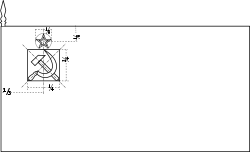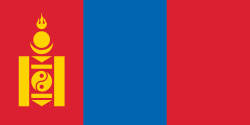Paweł Nastula

Paweł Marcin Nastula[1] (* 26. Juni 1970[2] in Warschau) ist ein polnischer Judoka.
Biografie
Nastula begann mit dem Judo-Training im Alter von zehn Jahren in Warschau. Seine stärksten Jahre waren zwischen 1994 und 1998. In diesen Jahren wurde er in der Klasse bis 95 kg bei über 200 Kämpfen nie bezwungen. In dieser Zeit wurde er dreimal Europameister, zweimal Weltmeister und bei den Olympischen Spielen 1996 in Atlanta Olympiasieger. Erst als er die Klasse wechselte und in der Gewichtsklasse bis 100 kg antrat, war seine Erfolgszeit beendet.
1995 und 1997 wurde er polnischer Sportler des Jahres. Im Jahr 2000 veröffentlichte er sein Buch Mein Judo.
Ab Mitte 2005 nahm Paweł Nastula an der Mixed-Martial-Arts-Veranstaltung Pride FC teil. Er kämpfte u. a. gegen Antônio Rodrigo Nogueira, Alexander Jemeljanenko und Edson Drago. 2006 wurde er nach einem Kampf gegen Josh Barnett des Dopings überführt. Der Test ergab erhöhte Werte für die vier Substanzen Nandrolon, Phenylpropanolamin, Pseudoephedrin und Ephedrin.[3]
In Polen ist er bis heute der beliebteste Judoka. 2009 nahm er an der polnischen Version von Let’s Dance teil.
Weblinks
- Paweł Nastula auf Judoinside (englisch)
- Paweł Nastula in der Datenbank von Sherdog (englisch)
Einzelnachweise
- ↑ NASTULA CLUB | Rejestr.io. Abgerufen am 26. März 2019.
- ↑ JudoInside - Pawel Nastula Judoka. Abgerufen am 4. Juli 2023.
- ↑ mmaweekly.com: Vitor Belfort & Pawel Nastula suspended (Memento vom 20. Mai 2007 im Internet Archive). 21. Dezember 2006
| Personendaten | |
|---|---|
| NAME | Nastula, Paweł |
| ALTERNATIVNAMEN | Nastula, Paweł Marcin (vollständiger Name) |
| KURZBESCHREIBUNG | polnischer Judoka |
| GEBURTSDATUM | 26. Juni 1970 |
| GEBURTSORT | Warschau |
Auf dieser Seite verwendete Medien
Olympic Rings without "rims" (gaps between the rings), As used, eg. in the logos of the 2008 and 2016 Olympics. The colour scheme applied here was specified in 2023 guidelines.
Olympic Rings without "rims" (gaps between the rings), As used, eg. in the logos of the 2008 and 2016 Olympics. The colour scheme applied here was specified in 2023 guidelines.
(c) I, Cmapm, CC BY-SA 3.0
The flag of the Soviet Union (1955-1991) using a darker shade of red.

(c) I, Cmapm, CC BY-SA 3.0
The flag of the Soviet Union (1955-1991) using a darker shade of red.

Variant version of a flag of Japan, used between January 27, 1870 and August 13, 1999 (aspect ratio 7:10).
Variant version of a flag of Japan, used between January 27, 1870 and August 13, 1999 (aspect ratio 7:10).
Flag of South Korea from 21 February 1984 to 15 October 1997, when the exact colors were specified into their shades.
The flag of Brazil from 1968 to 1992 with 23 stars.
The flag of Brazil from 1968 to 1992 with 23 stars.
Flag of Belarus 1995-2012
Flag of Belarus 1995-2012
Pictograms of Olympic sports - Judo. This is unofficial sample picture. Images of official Olympic pictograms for the 1948 Summer Olympics and all Summer Olympics since 1964 can be found in corresponding Official Reports.
Autor/Urheber: Larry Burton on Picasa Web Albums, Lizenz: CC BY-SA 3.0
Paweł Nastula at the Caesars Palace on October 19, 2006.














